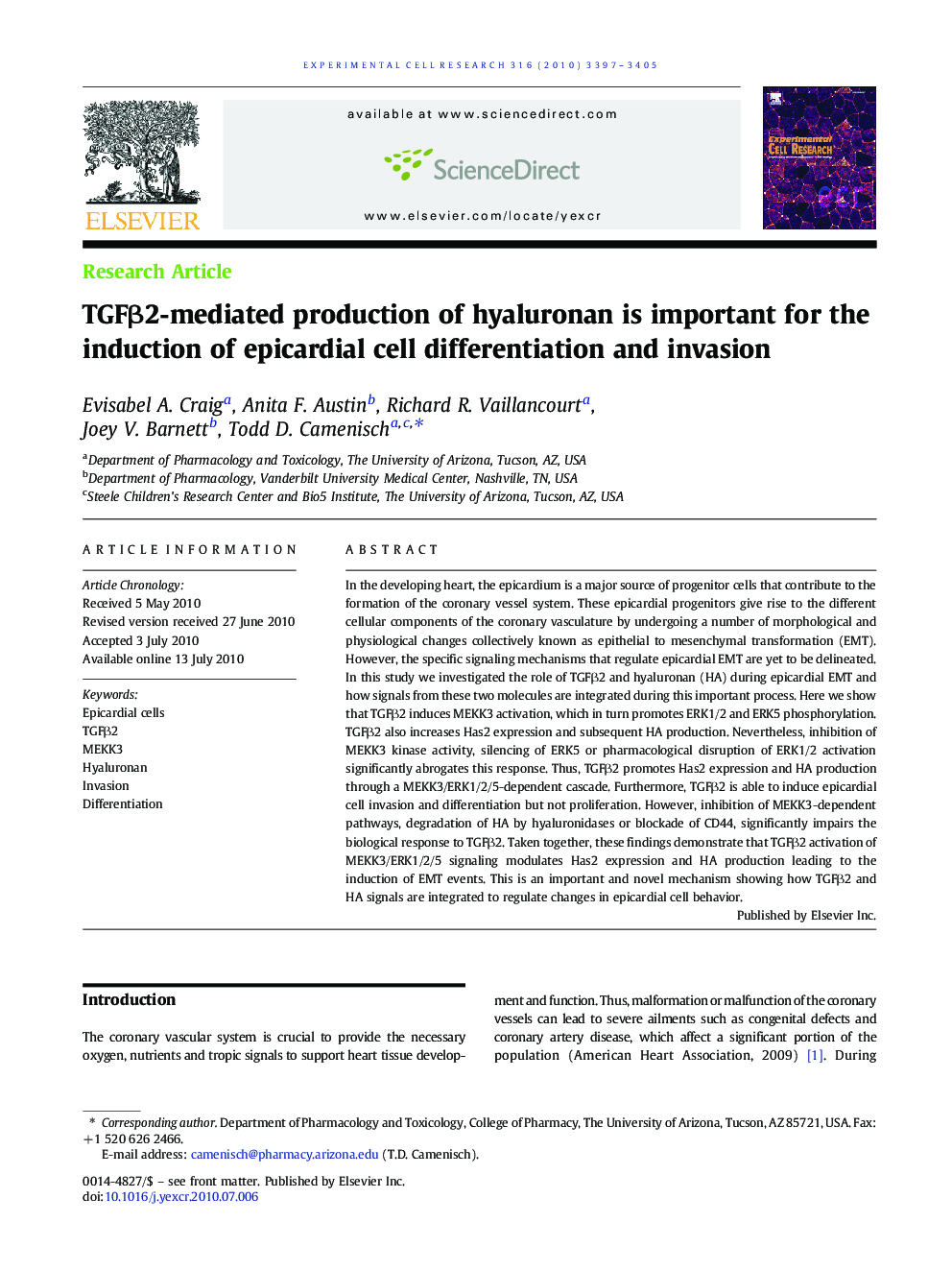| Article ID | Journal | Published Year | Pages | File Type |
|---|---|---|---|---|
| 2131371 | Experimental Cell Research | 2010 | 9 Pages |
In the developing heart, the epicardium is a major source of progenitor cells that contribute to the formation of the coronary vessel system. These epicardial progenitors give rise to the different cellular components of the coronary vasculature by undergoing a number of morphological and physiological changes collectively known as epithelial to mesenchymal transformation (EMT). However, the specific signaling mechanisms that regulate epicardial EMT are yet to be delineated. In this study we investigated the role of TGFβ2 and hyaluronan (HA) during epicardial EMT and how signals from these two molecules are integrated during this important process. Here we show that TGFβ2 induces MEKK3 activation, which in turn promotes ERK1/2 and ERK5 phosphorylation. TGFβ2 also increases Has2 expression and subsequent HA production. Nevertheless, inhibition of MEKK3 kinase activity, silencing of ERK5 or pharmacological disruption of ERK1/2 activation significantly abrogates this response. Thus, TGFβ2 promotes Has2 expression and HA production through a MEKK3/ERK1/2/5-dependent cascade. Furthermore, TGFβ2 is able to induce epicardial cell invasion and differentiation but not proliferation. However, inhibition of MEKK3-dependent pathways, degradation of HA by hyaluronidases or blockade of CD44, significantly impairs the biological response to TGFβ2. Taken together, these findings demonstrate that TGFβ2 activation of MEKK3/ERK1/2/5 signaling modulates Has2 expression and HA production leading to the induction of EMT events. This is an important and novel mechanism showing how TGFβ2 and HA signals are integrated to regulate changes in epicardial cell behavior.
